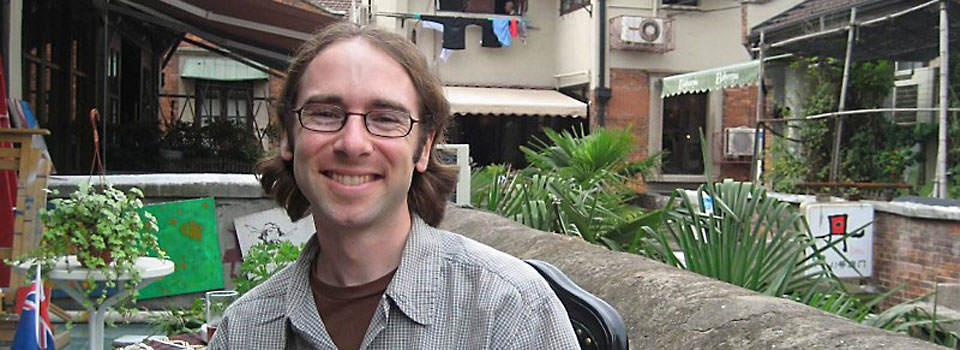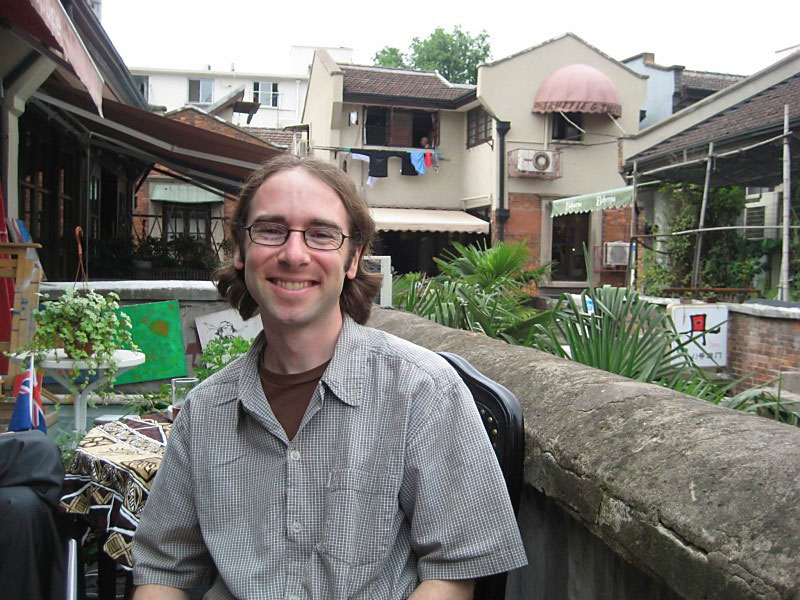Developing globally competent engineering researchers
Developing globally competent engineering researchers
| Author: | Lisa Hunt Tally |
|---|---|
| Magazine Section: | Innovate |
| College or School: | CoE |
| Article Type: | Issue Feature |
| Page CSS: | .sidebar.right {
top: -1200px; } |
In 2009, President Barack Obama pledged to send 100,000 American students to China over the following four years. Shortly after, the National Science Foundation (NSF) chose a team of Purdue engineering faculty and staff — including the School of Engineering Education’s Brent Jesiek — to help determine how to do it.
Through a pilot program, the team devised recruitment, placement and orientation protocols for 58 U.S. undergraduate and graduate students, from Purdue and more than 40 other U.S. universities, who conducted research in China last summer as participants in NSF’s International Research and Education in Engineering (IREE) program. The pilot program’s goal: to achieve quality engineering research collaborations, make IREE more affordable and examine which forms of cross-cultural orientation are most effective.
“With China being identified as an up-and-coming R&D leader, it’s viewed as strategically important to the United States to seed and sustain research collaborations with them,” Jesiek says. Students fanned out across mainland China and beyond to take 10- to 12-week research internships in Beijing, Shanghai, Hong Kong and other locations including Mongolia, primarily in university labs.
The Purdue team — which includes Mechanical Engineering’s Eckhard Groll, Yating Chang of the Office of Professional Practice, Mourad Ouzzani of Discovery Park’s Cyber Center, Yi Shen of the School of Engineering Education, and Dan Hirleman (now dean of engineering at the University of California, Merced) — had end-to-end responsibility for the program. After ranking hundreds of applications to determine the final list of awardees, the team developed and used three orientation programs for students and compared the relative effectiveness of each.
“We offered a two-week, face-to-face orientation at Purdue last year,” Jesiek says. “For a different set of students, we offered a similar orientation, but it was held in Shanghai.” The third group of students experienced an online orientation program, which featured lower overhead and provided both synchronous and asynchronous activities for students to complete.
Along with background on the Mandarin language, orientation touched on Chinese history, diversity across China’s various regions, and cultural etiquette. Jesiek also led the development of Engineering Cultures China, a comprehensive set of learning materials that explore the social, cultural, and historical dimensions of engineering education and practice in the country. How do Chinese engineers typically approach problems? How are decisions made? How do relationships among team members and with supervisors work? What do legal contracts mean or represent?
“I think it’s universal that when you deal with cultures very different from your own, you’ll find very different approaches to engineering and problem-solving,” Jesiek says. To gain understanding of such differences, IREE awardees were required to write about their experiences in a blog, participate in a re-entry meeting held in September and write a comprehensive trip report.
Jesiek’s team was also responsible for the assessment and evaluation of the entire program. This included developing surveys, conducting focus groups and interviews and collecting other kinds of data. “One big question here,” Jesiek says, “was whether site placement, in which Purdue places groups of students, is more effective and scalable than self-placement, in which students enter the program with individual placements already arranged on their own."
While analysis of the data is ongoing, Jesiek reports that the site placement model is especially effective if program administrators can proactively identify specific disciplines and research areas at each host site, so that students can indicate their placement preferences when applying.
The Purdue research team also suggests a hybrid orientation format combining the best of the online version with the best of the face-to-face versions, which received higher evaluations. Self-paced online orientations before departure for China would cover essential program and travel information, along with basic information about language and culture, and face-to-face experiences would continue with community-building experiences and further language and cultural training in an immersive learning environment. The team also is developing recommendations for improved Mandarin language training, including greater emphasis on conversational skills, and role-play and simulation activities that simulate research environments.
The goal is to provide students with transformative learning experiences that enhance their global competency and thus their future effectiveness as engineering professionals and informed global citizens. “Through systematic research and evaluation efforts,” Jesiek says, “we’re beginning to develop the tools and strategies needed to evaluate the quality and impacts of various types of global engineering programs, so that we can optimize the programs.”
In fact, such insights were used to develop Jesiek’s new Engineering Cultures East Asia, a spring break study abroad program that took 10 Purdue engineering students to Japan, Hong Kong, and mainland China. As he explains, “Our research shows that many engineering students need a shorter stepping-stone experience before they sign up for a longer-term study or work assignment abroad. Engineering Cultures East Asia provides that kind of experience.”
Jesiek’s work is what his home base, the School of Engineering Education, is all about: engaging in systematic research to understand how engineering is best learned, taught and practiced. Jesiek says: “Tomorrow’s engineering leaders must learn how to turn global diversity into competitive advantage. We’re helping students develop the kinds of skills and abilities needed to lead this charge.”


Comments